Drinking Fountains
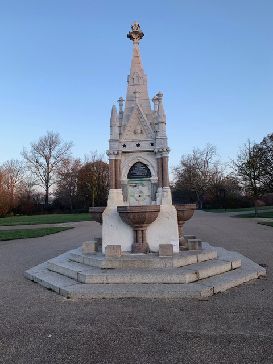
The inspiration to motivate me into plumbing came from E in London who admired this ornate Victorian drinking fountain while out walking in the early morning sun. E and I began to question when is something “art” and when is it not. Is a decorative, designed “fashionable” at the time “art” or is it just monumental stone masonry? Certainly the composition of the fountain within the park on a crispy winter morning in London is beautiful. What do you think? Can a drinking fountain be considered art?
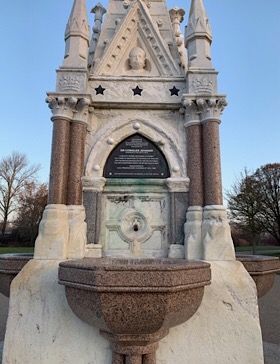
The Readymoney Drinking Fountain (also known as the Parsee Fountain) as seen above was erected in 1896 by Sir Cowasji Jehangir, a successful Parsee businessman and philanthropist from Bombay, as a token of thanks to the people of England for their protection of the Parsees in British India.(Wikipedia) The fountain derives its name from Sir Cowasji's nickname Ready Money. His likeness is sculptured into a triangular section above the inscription.
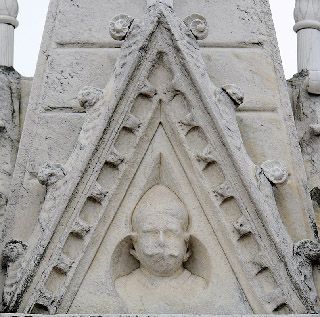
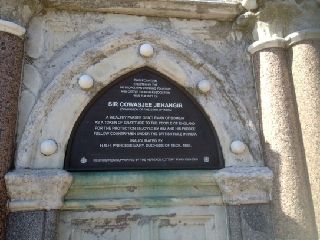
The inscription on the fountain reads:
This fountain erected by the Metropolitan Drinking Fountain and Cattle Trough Association was the gift of Sir Cowasjee Jehangir (Companion of the Star of India), a wealthy Parsee gentleman of Bombay, as a token of gratitude to the people of England for the protection enjoyed by him and his Parsee fellow countrymen under the British rule in India.
Inaugurated by H.R.H. Princess Mary, Duchess of Teck, 1869.
Restoration supported by the Heritage Lottery Fund 1999 – 2000.
The fountain was built in 1896 to the Gothic design of Robert Keirle, who was the architect of the Metropolitan Drinking Fountain and Cattle Trough Association. The Readymoney Fountain was constructed by the sculptor Henry Ross, using 10 tons of white marble from Sicily, and 4 tons of pink and grey granite from Aberdeen. (Wikipedia)
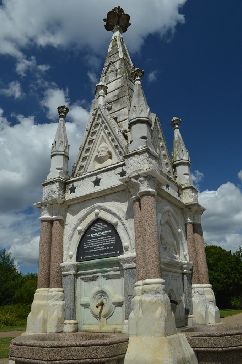
Although the fountain has a practical purpose, the composition of the structure is clearly designed to be attractive as well as functional. Careful thought has been given to the materials used being mindful to create a tonal harmony. And the masonry created to decorate the fountain is beautifully executed with the highest degree of skill for the time.
The main four-sided structure rests on three octagonal steps. The central white marble block has a pink granite basin on each side, with granite standing blocks on the ground beside each basin. Small apertures were included at the base of the central block to allow dogs to drink. (Wikipedia)
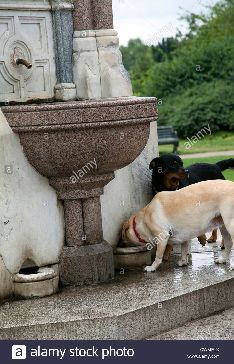
Above each basin is a carved marble panel, with one depicting a lion and another a Brahmin bull, topped by a frieze decorated with inlaid stars and a triangular pediment resembling a gable.
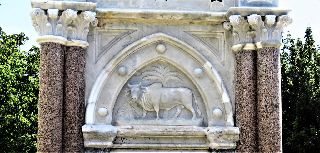
The central block rises to a gabled spire with a decorative terminal, with three pink granite columnettes rising to a single pinnacle at each corner. Three of the gables have a carved bust, depicting Readymoney (as shown above), Prince Albert, and Queen Victoria, and the fourth has a clock. (Wikipedia)
There is no doubt in my mind that this drinking fountain is a work of art. I think it is beautiful in its simplicity. And I particularly like the narrative that goes with the fountain. Sir Cowasjee Jehangir wanted to thank the people of England for the protection Britain (represented on the fountain by Queen Victoria and Prince Albert) gave him and his Parsee countrymen. I also love the contemporary story being created by the daily traffic of humans, dogs (and I am sure also birds) enjoying its presence in the park.
I have become obsessed with fountains so expect some more about them tomorrow.
Apologies to all the Australian Novocastrians for stating that Newcastle was in Central New South Wales. I meant to write Central Coast of NSW but now I’m not even sure if Newcastle is considered part of the Central Coast. To be clear- Newcastle is about 160 kms north of Sydney.
